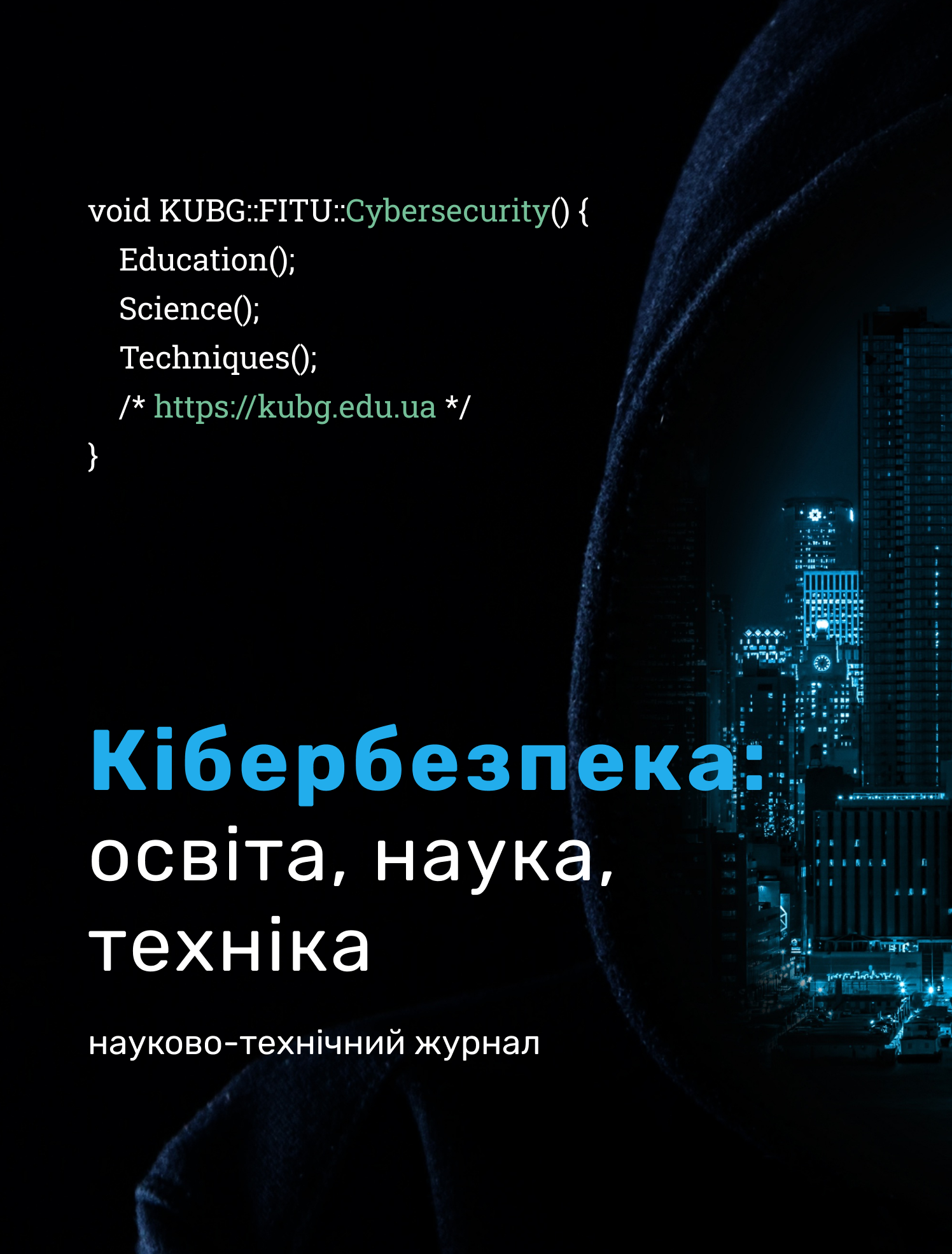ГОЛОГРАФІЧНІ 3D ВІТРИНИ ЯК ЗАСІБ ВІЗУАЛІЗАЦІЇ ІМІТАЦІЙНИХ МОДЕЛЕЙ
DOI:
https://doi.org/10.28925/2663-4023.2023.21.252259Ключові слова:
інформаційні технології; інформаційна система; 3D; голограма; комп’ютерний дизайн; web-технології.Анотація
У статті викладено огляд можливостей голографічних 3D вітрин, як один із методів візуалізації 3D контенту, шляхом розпізнавання окремих предметів на зображенні та перенесення їх, як окремих елементів на голографічну 3D вітрину. В залежності від типів імітаційних моделей, існує потреба у візуалізації отриманих результаті для їх оцінки та тестування, з можливостями подальшого вдосконалення. Використання дисплеїв, що передають зображення на площині, не дає можливості отримати повноцінну картину про предмет, що вивчається. Використання голографічних 3D вітрин відкриває можливості роботи з імітаційними моделями ще на етапі їх створення в програмних додатках для 3D моделювання чи для створення імітаційних 3D моделей. Це дає розробнику можливості пришвидшити корегування параметрів об’єктів ще на етапі формування моделей по першопочатковому технічному завданню. Слід зазначити, що голографічна 3D вітрина має найбільше ефективність для роботи з об'єктами, що мають співвідношення 1:1 з реальним промисловим зразком. Це дає можливість корегувати розробку та тестування моделі, а також змінювати чи оцінювати ефективність функціоналу та змінювати параметри роботи без створення корисної моделі. Дана методика значно пришвидшує час реалізації моделі від дизайн-проекту до реалізації фізичного предмету. Інформаційні технології, що використовуються в роботі голографічних 3D вітрин базуються на використанні web технологій, що за рахунок програмування js скриптів та параметрів таблиць стилів дозволяє отримати оптимальні результати з мінімальним навантаженням на робочий комп’ютер, що дозволяє використовувати додаток на комп’ютері з паралельно з додатками для розробки імітаційних моделей. Можливість виводу елементів робочої області на голографічну 3D вітрину безпосередньо в процесі моделювання дозволяє сконцентрувати увагу на деталях, які є непомітними на плоских дисплеях.
Завантаження
Посилання
O. V. Yurchenko Kerr effect in the fiber-optic medium / O. V. Yurchenko, K. Ya. Vlashchenko // Naumovskii readings: coll. theses add. participants of XX All-Ukrainian science and method conf. university graduates of education and young scientists, dedicated. On the 300th anniversary of the birth of H.S. Skovorody, Kharkiv, November 3–4. 2022 / Kharkiv. national ped. University named after H.S. Skovorody; [in general ed. O. A. Zhernovnykova]. - Kharkiv: [b. v.], 2022. – P. 323–326.
Statistical theoretical model of dynamic Bragg diffraction in a two-layer crystal system with an amorphous surface layer / S.V. Dmitriev, S.V. Lizunova, M.G. Tolmachov, B.V. Sheludchenko, O.S. Skakunova, V.B. Molodkin, V.V. Lizunov, I.E. Golentus, A.H. Karpov, O.G. Voytok, V.P. Pochekuev, S.P. Repetskyi, I.G. Vyshivana, L.M. Skapa, O.V. Barabash, G.O. Velikhovsky // Metallophysics and new technologies. — 2017. — Vol. 39, No. 12. — P. 1669-1691. — Bibliography: 9 titles. — Ukrainian
Fodchuk I. Determination of structural homogeneity of synthetic diamonds from analysis of Kikuchi lines intensity distribution / I. Fodchuk, S. Balovsyak, M. Borcha, Ya. Garabazhiv, V. Tkach // Semiconductor Physics, Quantum Electronics and Optoelectronics. - 2010. - Vol. 13(3). - P. 262-267.
Water Screen Projection - How We Created the World's Largest Water Screen. (2017). URL: https://www.laservision.com.au/water-screenprojection-world-record
Azuma R. T. A Survey of Augmented Reality Abstract. Journal of Materials Chemistry. 2018. Vol. 6, No. 6. P. 2792–2796. DOI: 10.1039/c7ta11015d
Feiner, S.K. (2002). Augmented reality: A new way of seeing. Scientific American, April, 52–62. doi: 10.1038/scientificamerican0402-48.
Hugues, O., Fuchs, P., & Nannipieri, O. (2011). New Augmented Reality Taxonomy: Technologies and Features of Augmented Environment. In Handbook of Augmented Reality (Handbook o, pp. 47–63). Springer. doi:10.1007/978-1-4614-0064-6_2.
Mann S., Furness T., Yuan Y., et. al. All Reality: Virtual, augmented, mixed (X), mediated (X,Y), and multimedia reality. arXiv. 2018. No. X. 14 p. URL: https://arxiv.org/abs/1804.08386.
Milgram P., Takemura H., Utsumi A., et. al. A class of displays on the reality-virtuality continuum: SPIE Proceedings Volume 2351: Telemanipulator and Telepresence Technologies, Boston, MA, United States, 95. P. 282–293. DOI: 10.1117/12.197321.
Mironova T. V. Innovations in Ukrainian Modern Art: New Technologies. Contemporary Art. 2019. No. 15, P. 149–158. DOI: 10.31500/2309-8813.15.2019.185933.
Normand J. M., Servières M., Moreau G. A new typology of Augmented Reality applications: ACM International Conference Proceeding Series, 12. P. 1–8. DOI: 10.1145/2160125.2160143.
Novikov M. Fields of the practical AR technology usage in the fine arts. Humanities science current issues. 2021. Vol. 3, No. 38. P. 28–33. DOI: 10.24919/2308-4863/38-3-5.
Opalev M. Structure and Features of Audiovisual Content Design of Architectural 3D-mapping. Vìsnik Harkìvsʹkoi deržavnoi akademìi designu ì mistectv. 2021. Vol. 2021, No. 1. P. 30–42. DOI: 10.33625/visnik2021.01.030.
Khorolska, K. (2022). THE POTENTIAL OF VARIOUS ARTIFICIAL INTELLIGENCE METHODS APPLICATION IN THE PROBLEM OF DRAWING RECOGNITION AND 2D 3D TRANSFORMATION. Electronic Professional Scientific Edition «Cybersecurity: Education, Science, Technique», 1(17), 21–30. https://doi.org/10.28925/2663-4023.2022.17.2130
Опубліковано
Як цитувати
Номер
Розділ
Ліцензія
Авторське право (c) 2023 Олег Пурський, Володимир Гамалій

Ця робота ліцензується відповідно до Creative Commons Attribution-NonCommercial-ShareAlike 4.0 International License.




